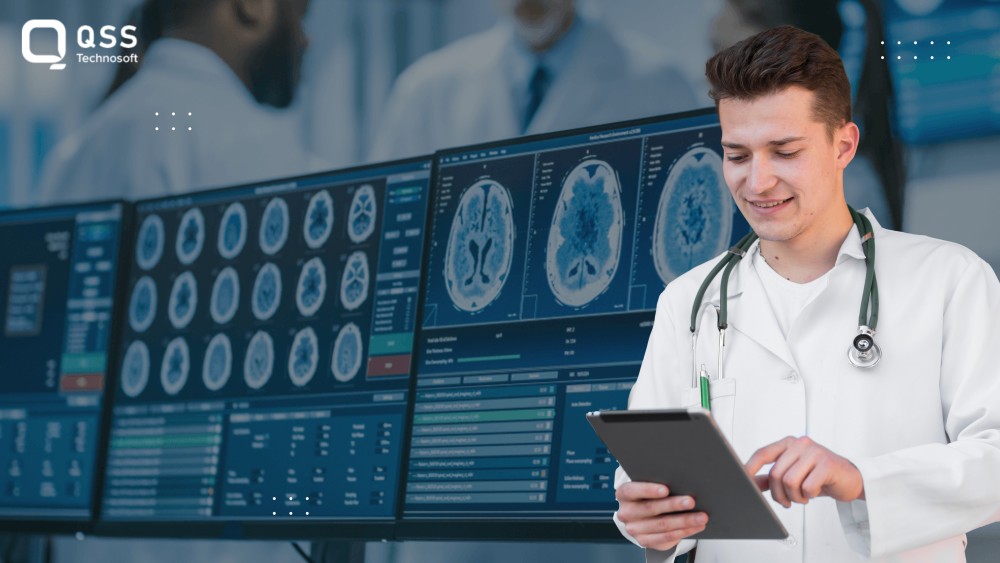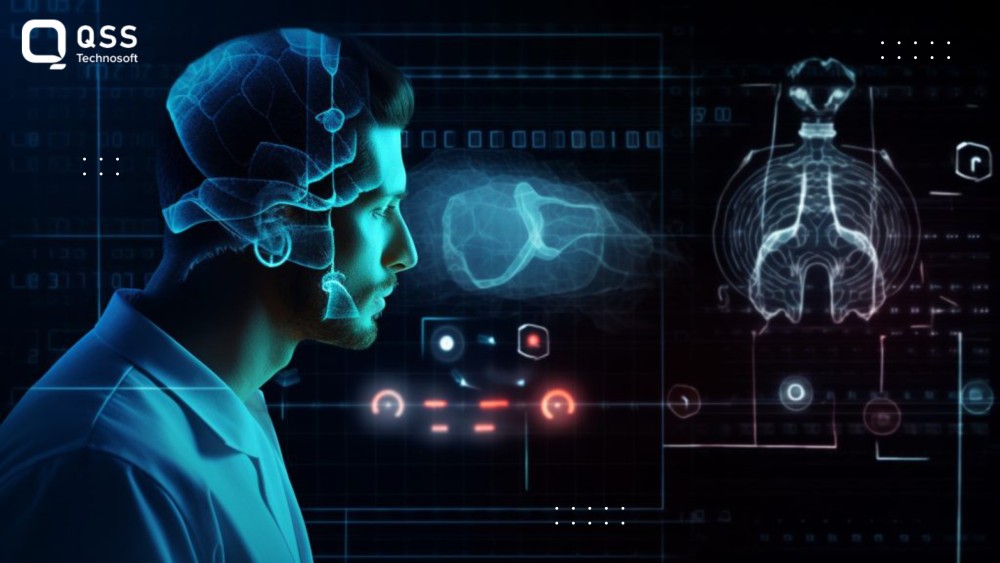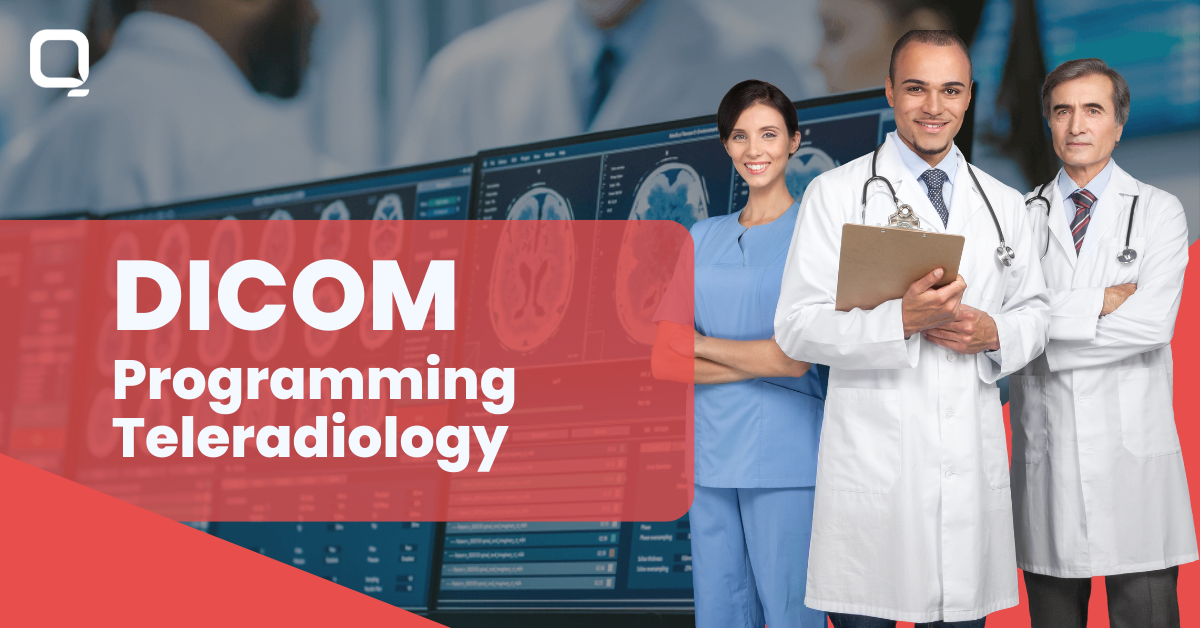With the evolving technologies healthcare industry is too rapidly evolving with more focus on efficient patient care through easy & error free sharing of medical images and patient data. The adoption of Digital Imaging and Communications in Medicine (DICOM) standards has revolutionized the way medical images are acquired, stored, and shared. DICOM-Compatible Machines have been adopted for offering modern healthcare solutions such as-
- streamlining workflows
- improving diagnosis accuracy
- enhancing patient care
In this article, we are exploring how DICOM-compatible machines are reshaping the healthcare industry by optimizing workflow processes. Continue reading to know more.
What are DICOM-Compatible Machines?
DICOM Compatible Machines refer to medical imaging devices, such as X-ray machines, MRI scanners, ultrasound machines and CT scanners that adhere to the Digital Imaging and Communications in Medicine (DICOM) standards. These standards enable the seamless acquisition, storage, and sharing of medical images and related patient data across different healthcare systems and devices, ensuring interoperability and streamlined workflows in healthcare settings.

How DICOM-Compatible Machines Are Transforming Healthcare Workflow
DICOM-compatible machines brought a new world of efficiency and collaboration in healthcare. Their role in streamlining workflows, enhancing diagnostics, and promoting secure data exchange in modern medicine. DICOM-compatible machines, including X-ray machines, MRI scanners, CT scanners, and ultrasound devices, adhere to these standards. Let’s explore how these machines are making a difference in the healthcare industry:
Effortless Image Sharing
DICOM-compatible machines ensure that medical images, such as X-rays, MRIs, and CT scans, can be easily shared among healthcare professionals regardless of their physical location. This real-time sharing accelerates diagnosis and treatment planning, particularly in emergencies.
Interoperability
One of the most significant advantages of DICOM compatibility is interoperability. It allows medical devices from different manufacturers to communicate effectively. This means that healthcare providers can use a variety of devices and platforms while maintaining data integrity. Interoperability also supports the integration of images with Electronic Health Records (EHR) systems, creating a comprehensive patient profile.
Preservation of Image Quality
DICOM ensures that medical images maintain their quality and resolution, even when transmitted digitally. This high fidelity is essential for accurate diagnoses, particularly in remote consultations and telemedicine. Doctors can trust that the images they receive represent the patient’s condition accurately.
Automation and Integration
DICOM technology automates many aspects of medical image management. It reduces administrative overhead, allowing healthcare providers to focus more on patient care and less on paperwork. Integration with Picture Archiving and Communication Systems (PACS) and Radiology Information Systems (RIS) further automates data storage and retrieval.
Collaboration
DICOM-compatible machines enable real-time sharing and discussion of medical images among healthcare professionals, regardless of their physical location. This collaborative approach is particularly valuable in telemedicine, where experts from different fields can work together to provide comprehensive care.
Enhancing Diagnostics and Treatment
DICOM-compatible machines are instrumental in enhancing diagnostics and treatment planning. Healthcare providers can access patient images promptly, aiding in early diagnosis and timely treatment. In emergency situations, the ability to swiftly share and review images significantly impacts patient outcomes.
Telemedicine and Remote Consultations
The advent of telemedicine has been accelerated by DICOM-compatible machines. Healthcare professionals can securely transmit images to remote specialists for consultation, enabling a broader range of medical expertise to be applied to patient cases. This is particularly crucial in areas with limited access to specialized care.

Reducing Duplication and Errors
DICOM standards include unique patient identifiers and metadata with images, reducing the risk of data entry errors and patient misidentification. This safeguards patient safety and ensures that the right image is associated with the right patient, contributing to accurate diagnoses.
Streamlined Reporting and Documentation
DICOM-compatible machines integrate seamlessly with Picture Archiving and Communication Systems (PACS) and Radiology Information Systems (RIS). This integration simplifies reporting and documentation processes. Radiologists can generate comprehensive reports that include annotated images, facilitating communication with referring physicians and specialists.
Research and Education
In addition to patient care, DICOM-compatible machines play a vital role in medical research and education. Medical institutions and researchers can access extensive image archives for studies and training purposes. This wealth of data contributes to advancements in medical knowledge and training.
Data Security and Compliance
Healthcare data security and compliance are paramount concerns. DICOM standards prioritize patient data security and ensure compliance with healthcare regulations like HIPAA. This safeguards patient privacy and data confidentiality throughout the image-sharing process.
Scalability and Future-Proofing
DICOM-compatible machines are designed with scalability in mind. As healthcare facilities grow and technology evolves, these machines can adapt to changing requirements. They support the integration of new devices, ensuring they remain efficient and relevant over time.
Cost-Efficiency and Sustainability
By reducing the need for physical film and manual data entry, DICOM-compatible machines contribute to cost savings in the long run. They eliminate the expense of film development, storage, and disposal while promoting a more environmentally sustainable approach to healthcare.
Patient-Centered Care
Ultimately, the adoption of DICOM-compatible machines aligns with the healthcare industry’s shift towards patient-centered care. Patients benefit from faster diagnosis, more accurate treatment, and the ability to access their medical images for personal records or second opinions.
Conclusion
DICOM-compatible machines have become the linchpin of modern healthcare, streamlining workflows and enhancing patient care. They facilitate effortless image sharing, ensure interoperability, preserve image quality, automate administrative tasks, and enable seamless collaboration among healthcare professionals. As the healthcare industry continues to evolve, DICOM-compatible machines will play an increasingly crucial role in optimizing workflow processes, improving diagnosis accuracy, and ultimately delivering better patient outcomes. These machines represent not just technological advancements but a commitment to providing the best possible care in today’s dynamic healthcare landscape.
Get Seamless Medical Imaging Services with QSS Technosoft’s DICOM services
As a trusted partner in advancing healthcare technology, we bring you cutting-edge solutions that adhere to the highest industry standards. Our DICOM services ensure that medical images and patient data flow seamlessly, allowing for accurate diagnoses, timely treatment, and improved patient care. With our expertise, healthcare providers can enhance their workflows, reduce errors, and embrace the future of healthcare with confidence. Join hands with QSS Technosoft to elevate your healthcare capabilities and provide the best possible care to your patients.
We are proud to mention that our work has been recognized by leading B2B reviews and research platforms like GoodFirms, Clutch, MirrorView, and many more.
















